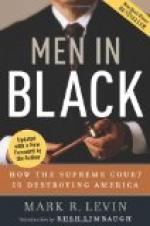Now if the judge declares a mistrial, on the motion of the plaintiff, that is his own look out. He believes that he can not have a fair trial, that he can not proceed. But suppose the defendant by his lawyer makes the trial unfair. His lawyer keeps asking those improper questions which imply so much to the minds of the jury. The judge may speak severely to the lawyer and caution him not to keep on putting suggestive questions. That is all that he can do. It would be plainly unfair to order the withdrawal of a juror. The trial according to the opinion of the judge may be unfair. The plaintiff’s counsel is afraid to ask for a mistrial, first on account of the trouble and expense to his client, and second, if it be denied, the jury will believe he thinks them unfair and does not want them to try the case. The judge is in a curious position with regard to objectionable questions and testimony, he ought not to penalize the plaintiff by punishing the defendant. The loosening of the laws of evidence might do away with quandaries such as these.
XII
THE MOVEMENTS IN COURT
Motions imply movement and action especially in a drama, but in a court motions are the reverse and occupy the place of dramatic pauses which delay the real movement of the play. They are of great interest to the lawyers, of some interest to the judge, because he has at once to pass upon them, of but little interest to the client, who does not understand them, and of no interest whatsoever to the jury, except when they result in the disposal of a trial.
Before the case begins the defendant makes a motion. When the plaintiff’s lawyer has finished his opening, the other side makes a motion to dismiss the case. When he ends his evidence, the other lawyer moves to dismiss. When both sides are through, each moves. When the jury bring in the verdict either side may move, or both when neither is satisfied. All through the trial there are quantities of little motions. Motions to strike out, motions to instruct, motions to make the witness answer a question, motions to make the other lawyer behave. Except for pointing the finger or raising the voice in talking, they are not movements, they are only verbal, the action comes in the play of emotions of the parties in court. Motions are merely saying what either side wants; the formal asking for something.
The first important motion is on the pleadings themselves or when the plaintiff has opened. If the judge does not believe that the plaintiff has stated a case in law, he dismisses it on a motion of the defendant and the judgment is “without prejudice.” The trouble is that a judgment of this kind does not finally dispose of the dispute. The plaintiff may bring the action over again.
He may appeal from the decision or judgment and the appellate court may rule that the trial judge was wrong and then after an interval the case goes to a new trial just the same. By this time the plaintiff or his lawyer may believe he has no case and desists, but the course depends upon whether the parties have not died, grown tired, gone into the hands of a receiver, or moved to Borneo. The jury know little as to this state of affairs and are not interested in the preliminary motions. The clients do not understand but think the lawyers are good talkers.




